
Colchicaceae is a family of flowering plants that includes 15 genera with a total of about 285 known species according to Christenhusz and Byng in 2016.

Hemerocallidoideae is the a subfamily of flowering plants, part of the family Asphodelaceae sensu lato in the monocot order Asparagales according to the APG system of 2016. Earlier classification systems treated the group as a separate family, the Hemerocallidaceae. The name is derived from the generic name of the type genus, Hemerocallis. The largest genera in the group are Dianella, Hemerocallis (15), and Caesia (11).
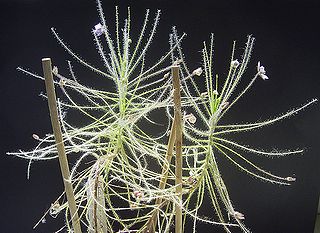
Byblis is a small genus of carnivorous plants, sometimes termed the rainbow plants for the attractive appearance of their mucilage-covered leaves in bright sunshine. Native to Australia and New Guinea, it is the only genus in the family Byblidaceae. The first species in the genus was described by the English botanist Richard Anthony Salisbury in 1808. Eight species are now recognized.
Sir Terence Orby Conran was an English designer, restaurateur, retailer and writer. He founded the Design Museum in Shad Thames, London in 1989 The British designer Thomas Heatherwick said that Conran "moved Britain forward to make it an influence around the world." Edward Barber, from the British design team Barber & Osgerby, described Conran as "the most passionate man in Britain when it comes to design, and his central idea has always been 'Design is there to improve your life.'" The satirist Craig Brown once joked that before Conran "there were no chairs and no France."
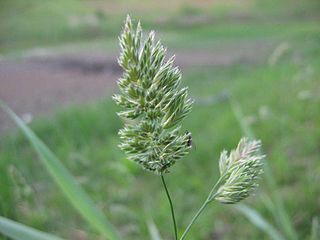
In plant taxonomy, commelinids is a clade of flowering plants within the monocots, distinguished by having cell walls containing ferulic acid.
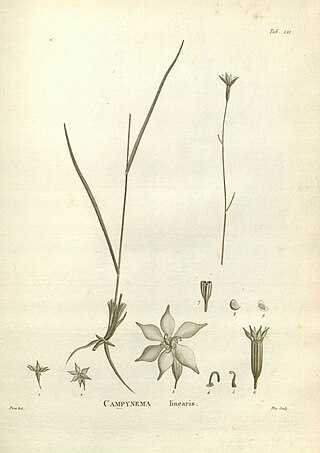
Campynemataceae (Campynemaceae) is a family of flowering plants. The family consists of two genera and four species of perennial herbaceous plants endemic to New Caledonia and Tasmania.

Ripogonum is a genus of flowering plants confined to eastern Australia, New Zealand, and New Guinea. Until recently this genus was included in the family Smilacaceae, and earlier in the family Liliaceae, but it has now been separated as its own family Ripogonaceae.

Uvulariaceae is a family of flowering plants. While seldom recognised, the family is accepted by the Dahlgren system, which places it in order Liliales, superorder Lilianae, and the subclass Liliidae [=monocotyledons] of class Magnoliopsida [=angiosperms].
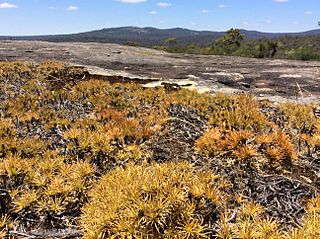
Boryaceae is a family of highly drought-tolerant flowering plants native to Australia, placed in the order Asparagales of the monocots. The family includes two genera, with twelve species in total in Australia.

Asparagus racemosus is a species of asparagus native from Africa through southern Asia, including the Indian subcontinent, to northern Australia. It grows 1–2 m tall and prefers to take root in gravelly, rocky soils high up in piedmont plains, at 1,300–1,400 m (4,300–4,600 ft) elevation. It was botanically described in 1799. Because of its multiple uses, the demand for Asparagus racemosus is constantly on the rise. Due to destructive harvesting, combined with habitat destruction, and deforestation, the plant is now considered "endangered" in its natural habitat.

Drosera whittakeri is a sundew that is native to South Australia and Victoria.

Geitonoplesium is a monotypic genus in the family Asphodelaceae, containing the sole species Geitonoplesium cymosum, commonly known as scrambling lily. The species is a perennial evergreen scrambling vine found in rainforests, sclerophyll forests and woodlands of eastern Australia, and parts of Malesia and Melanesia.
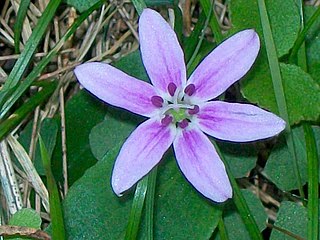
Schelhammera is a genus of perennial flowering plants in the family Colchicaceae, comprising two species.
Murchisonia was a genus of perennial herbs in the family Asparagaceae, subfamily Lomandroideae.
Cape Conran is a locality in far-eastern Victoria, Australia. It lies within the Cape Conran Coastal Park located between Marlo and Bemm River about 400 km from Melbourne. The area actually includes two capes: East Cape Conran and West Cape Conran. Both are popular recreational destinations for visitors from nearby towns such as Orbost, as well as further afield, especially in the warmer months.
Ripogonum brevifolium, commonly known as small–leaved supplejack, is a vine, or sometimes a shrub, native to Australia.
MelanthialesLink was an order of monocotyledons, whose name and botanical authority is derived by typification from the description of the type family, Melanthiaceae by Johann Heinrich Friedrich Link in 1829.
Barry John Conn, is an Australian botanist. He was awarded a Ph.D. from Adelaide University in 1982 for work on Prostanthera.
Trevor Clifford (1927-2019) was an Australian botanist and taxonomist, distinguished for his work on the hybridisation of species and palaeobotany.
Margaret Beth Gott was an Australian plant physiologist, ethnobotanist and academic who specialised in the use of indigenous plants in south-east Australia.












